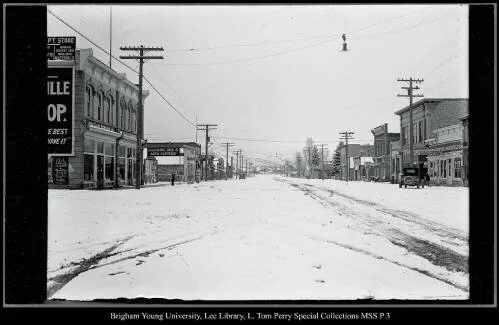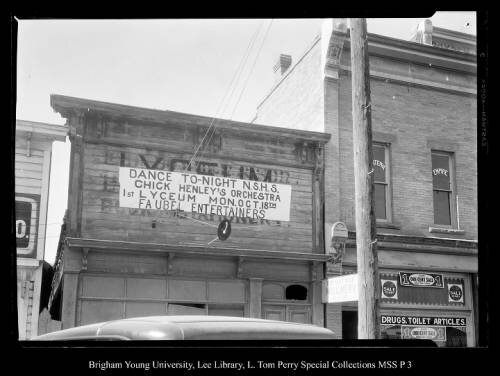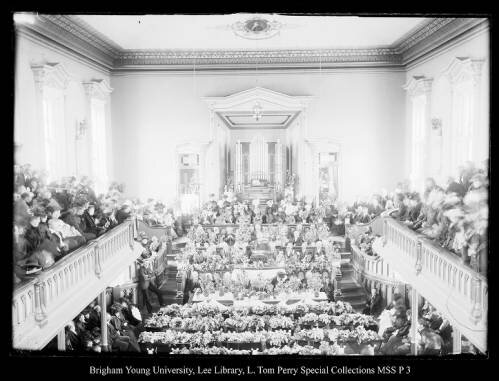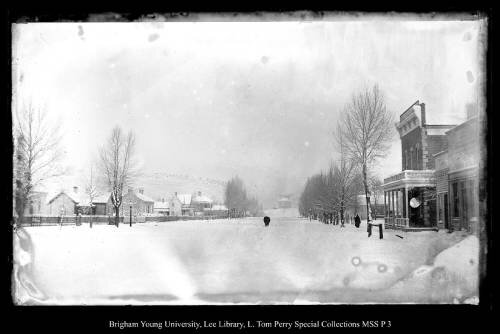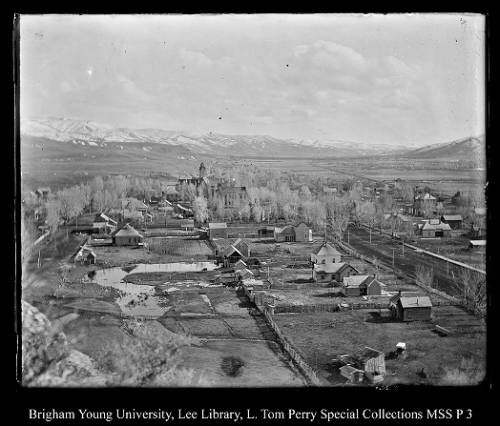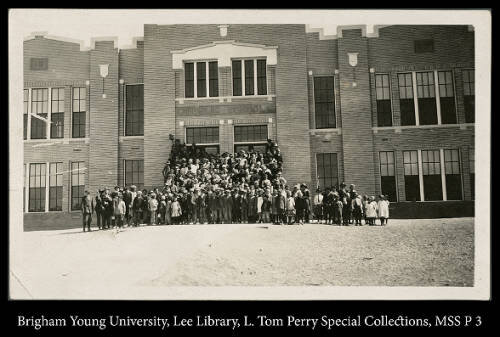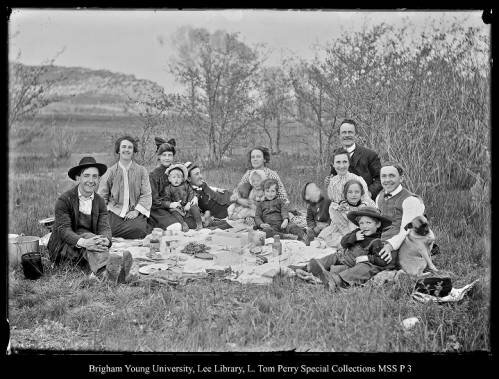George Beard Photography Exhibit
George Beard was a multi talented artist, working in photography, painting, and watercolors who lived most of his life in Coalville, Utah. The mountains of Coalville and the surrounding area were a never-ending source of inspiration and stimulation for him as an artist.
Born in England in 1854, George Beard immigrated to America in 1868, joining the large-scale migration of Latter-day Saints to Zion. His voyage on boat, train, and then wagon would take more than three months. Upon his arrival in Utah Territory, his family settled in Coalville, where Beard remained for all his life.
As an adult, he became a respected civic leader in the community. In addition to managing Coalville’s Cooperative Mercantile Institution, he also served as both a mayor and LDS bishop in the town, as well as a state legislator, choir leader, and producer and director of community musicals.Photography was not his profession, nor was it his primary artistic pursuit (he became more well known for his paintings). Yet the care with which he approached this new and quickly evolving medium was clear. Alice was the name that he affectionately gave to his camera and together they were alchemists forging light, shade, and matter into powerful artifacts of awe and remembrance.
Photography was a major part of his artistic technique, and it is evident in his photographs that he had an artist’s eye for composition. Beard’s daughter, Edna Beard Taylor, recalled that her father: “photographed and made sketches of the subject during the summer and in the winter he would reproduce them on canvas. He always said mother was his greatest critic and inspiration. He was untiring in his photography. He would wait for hours for certain light and cloud effects.
“He’s also a photographer…or more accurately, an artist with a camera. In more than 20 years of handling pictures for newspapers, I’ve never seen anything like his camera studies of scenes in his beloved mountains and valleys.… George Beard, of Coalville, is a man the world should know.”
George Beard’s exploration of photography was made possible by the dramatic changes in this medium in the late nineteenth century. This period saw the introduction of faster, easier, and more mass-produced formats, among them the dry-plate negative. This new process was much less expensive than producing daguerreotypes, and eliminated the requirement of a portable darkroom. The plates could be processed days or weeks after exposing them, rather than needing to be done immediately.
Beard was largely a self-taught artist, but he met or sought advice from multiple artists in the region, among them the noted photographer Charles Roscoe Savage. Using his photographs primarily as inspiration for his landscape paintings, it is interesting to note that he developed very few of his many negatives into prints. In fact, of the entire collection housed at the L. Tom Perry Special Collections of Harold B. Lee Library, Brigham Young University, which comprises 1,761 photographs, only 197 objects are original prints.
George Beard died on 3 October 1944. A little over a year before Beard’s death, Ralph Jordan, a Deseret News columnist provided a remarkable and fitting eulogy, first praising Beard’s paintings, but then declaring: “he’s also a photographer…or more accurately, an artist with a camera. In more than 20 years of handling pictures for newspapers, I’ve never seen anything like his camera studies of scenes in his beloved mountains and valleys.… George Beard, of Coalville, is a man the world should know.”
The work of pioneer artist George Beard creates a captivating portrait of the early days of Coalville. Beard’s embrace of glass plate technology skillfully and lovingly documented moments both public and private, and worlds both natural and man-made. Beard’s photographs beautifully capture the transformation of this community across five decades around the turn of the century. The photographs he took of Coalville and the surrounding area are now on display at the Ledges Event Center You can also view them virtually here.
George Beard Images and Bio Info Courtesy of Perry Special Collections, Harold B. Lee Library, Brigham Young University, Provo, UT.

